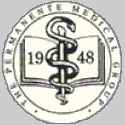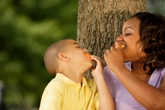|
 |
Mealtimes and activities

Get moving
- Aim for at least 60 minutes of activity a day.
- Escape the pull of the couch, get up and get moving.
Eat smart
- Aim for 5 to 9 servings of fruits and vegetables a day.
- Fuel up with breakfast every morning.
Pull the plug
- Limit screen time (TV, computers, and video games) to 1 to 2 hours a day.
- Move the TV out of the bedroom.
Drink well
- Choose water or non-fat milk.
- Limit soda, sports drinks, juice, and sweetened drinks, one can is like drinking a candy bar.
Play ball and stay safe

Your child needs regular exercise for healthy growth and development, and age 7 is a great age for her to get involved in organized sports. The options are endless: soccer, gymnastics, basketball, baseball, karate, hockey, tennis, or swimming.
Benefits
On the up side, no matter which sport she chooses, playing a team sport has long lasting benefits. It can:
- Boost self-esteem and give her a sense of achievement.
- Reduce the risk of diseases such as obesity and diabetes.
- Teach teamwork and how to be a gracious winner and loser.
- Build self-discipline and an understanding of commitment.
- Improve overall fitness and endurance.
- Provide a sense of purpose and belonging.
Risks
The downside is the number of children who get hurt. Every year, more than 3 million children ages 14 and younger receive medical treatment for sports-related injuries. Children are more prone to injury because they lack coordination and have slower reaction times. Being new to a sport or being on a team above her skill level puts your child at greater risk for mishaps. Among children age 5 to 9, girls receive more injuries than boys. The most common injuries are:
- Concussion: any blow to the head can cause brain injury.
- Strains and sprains: muscles, tendons, or ligaments, most often the ankle.
- Broken bones: kids’ bones are still growing and the growth plates at the end of their long bones are prone to injury.
- Overuse injuries: also called repetitive use injuries, these are the result of doing the same motion repeatedly (pitcher’s arm, also called tendonitis, is an example).
- Heat-related illnesses: becoming dehydrated is surprisingly easy and can lead to heat exhaustion or heat stroke.
Safety
Experts estimate that about half of those 3 million sports-related injuries could have been prevented. Something as simple as wearing a helmet while biking or skateboarding can reduce the risk of head injuries by as much as 85 percent.
These safety precautions will reduce the risk of injury to your budding athlete:
- Consider your child’s physical maturity and skill level, not just her age when choosing a league or a team. Matching experience and abilities will make playing safer and more fun.
- Get appropriate gear: Helmets, shin guards, knee pads, or whatever her sport requires. Check periodically to ensure the equipment fits correctly and is in good condition.
- Enforce safety rules.
- Teach your child to warm up and stretch before vigorous activity to minimize muscle strain or soft-tissue injuries.
- Make sure she takes 1 or 2 day off a week to give her muscles a chance to rest and recover.
- Vary activities to prevent repetitive use injuries and to develop different muscle groups.
- Keep her hydrated and cool. Keep water handy, instead of sports drinks, which have lots of sugar and calories. She can replace salt and minerals by eating regular foods after the game.
The American Academy of Pediatrics has some great tips on kids and sports.
Read more about Kids and Organized Sports in Healthy Kids newsletter, Volume 7, Issue 2.
Help with habits

We all have bad habits, even children. Their habits tend to drive parents nuts: nail biting, knuckle cracking, chewing on shirts, or picking at their lip or skin. These habits make parents worry and nag. The worry is unnecessary and the nagging will not help. Habits like these are very common, even normal. If ignored, they usually go away in just a few months.
Most experts agree that ignoring the habit is the quickest way to make it disappear. Calling attention to it can actually prolong a habit and make it more severe.
Habits
It helps to talk directly with your child about his habit. In a quiet moment, explain why you want him to stop. For example, you can tell him that:
- Biting on nails can lead to skin infections and more colds.
- Chewing on shirts ruins the shirt.
- Licking his lips makes them dry and chapped.
Tics
Children this age may also develop tics. These are sudden, rapid, repetitive movements. They can include:
- Eye blinking, throat clearing, shoulder shrugging, head jerking, and finger movements.
- A habit cough, one that is dry and honking in nature and tends to develop after a cold, but continues after the other symptoms have disappeared.
Typically, tics:
- Occur only when your child is awake.
- Increase when he is anxious.
- Can happen when he is relaxed (for example, watching TV).
- Can be stopped briefly by your child, but not for long. They are mostly out of his control.
The cause for tics is not known, but there are some patterns:
- Boys get them 3 times more often than girls.
- Tics often run in families.
- Most kids grow out of their tics, often in just a few months. Because of this, medical treatment usually is not needed.
Helping your child manage
If your child is getting teased about having a tic or habit, he may want to talk about it with you. It can help to come up with a way for him to explain to other children what is happening when they notice and stare. Your child could say something like, “When I get scared, my body takes over. Some people’s hearts beat faster or their hands shake. I do this.”
You can also help your child by reducing the stress in his life. Talk openly about whether anything is going on at school, such as bullying or teasing. Over-scheduling your child may be another source of stress. Sometimes tics that start under stressful situations continue even after the stress is gone. However, most tics will still go away on their own when addressed gently and ignored.
If the tics are causing your child a great deal of emotional stress, are persistent and frequent, or last more than a year, you should talk to your pediatrician. There are medications for treating tics, but because they have side effects, most doctors avoid using them unless it is necessary. Medications are used when a tic interferes with the child’s life.
When to talk to your doctor
If your child has many habits occurring at the same time, like sniffing and turning his head with vocalizations, he may have a more severe tic disorder called Tourettes Syndrome. If you have a family history of Tourettes or if these symptoms occur while your child is taking medication for ADHD, you should also contact your pediatrician.
If you cannot figure out why your child is anxious or reduce his stress, it is a good idea to seek professional help. You can talk to your pediatrician or call Kaiser Permanente’s behavioral health services.
Check out the KidsHealth Web site for more tips on dealing with your child’s habits.
Stay safe

At this age, accidents are the biggest threat to your child’s health and life. We care about your child and want to help you prevent these injuries. Follow these accident prevention tips:
Booster seat. Use a belt positioning booster seat secured properly in the back seat for every ride. Keep children in their booster seats in the back seat until they are at least 4 feet 9 inches tall and can pass the Seat Belt Fit Test:
- The seat belt must lie snugly across the upper thighs, not the stomach
- The shoulder belt should lie snug across the shoulder and chest
- The shoulder belt should not cross the neck or face
California state laws: require that children be restrained in a safety seat in the back seat until they are at least 8 years old or are at least 4 feet 9 inches tall. It is important to know that this law is a minimum requirement, not a guide for parents who want to provide maximum safety. Learn more about the law.
Most children need their booster seats until they are between 8 and 12 years old. Do not allow children to sit in the front seat of a vehicle with a passenger air bag until they are at least 13. The Seatcheck web site can help you find a safety seat inspection location near you.
Street safety. Continue teaching your child how to cross the street safely. At this age, he is all guts and no sense. He cannot judge the speed of a moving car and will often forget to look before he crosses. Have him cross with an adult. Do not let him play by a street alone.
Bike and scooter safety. Make wearing a helmet when using anything with wheels a rule for your child with clear consequences if he forgets to put one on. California state law requires helmets for any child younger than 18 riding a bike. At this age, your child is too young to ride in the street.
Water safety. Teach your child to swim. It is a skill that will keep him safe. Even when he knows how to swim, never let him swim alone. Teach him never to dive head first into shallow water or water of unknown depth.
Fire safety. Install smoke and carbon monoxide detectors. Check them monthly and consider changing the batteries every 6 months. Have a fire and earthquake escape plan and practice it with your family.
Gun safety. When there is a gun in the home, children are in more danger of being shot by themselves, their friends, or family members than by an intruder. If you have a gun, keep it unloaded and in a locked safe, with its ammunition locked up separately. When your child visits a new home, ask if there are guns there and how they are stored.
Pet safety. Teach your child never to approach or try to touch any strange animal, wildlife, or bird. Teach your child “to be like a tree” and back away slowly if he is ever threatened by a loose or wild animal. Learn more with this article on safety around animals.
The American Academy of Pediatrics offers more tips on how to reduce the risk of major injuries. Check out their age-related safety sheets for more details.